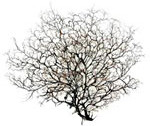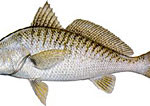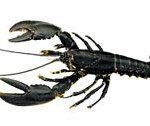
Eunicella spp. and Paramuricea clavata
There are few more stunning marine fauna than the beautiful large seafans or gorgonia. They look like plants; in fact they are soft corals, colonial marine animals forming erect, flattened, branching colonies in mainly tropical and subtropical waters. The colonies may be up to 1m high and are often colourful, with purples, reds, and yellows predominating.
The individuals, or polyps have eight feathery tentacles (hence their description as octocorals) and are passive suspension feeders of plankton organisms. Colonies branch profusely and the branches are usually oriented in one plane and at right angles to the prevailing moderately strong currents. This helps maximise the plankton ‘harvest’. Unlike the hard corals that have individual stomachs, gorgonians share a common digestive system and any food caught by an individual helps feeds the entire colony.
Sea fans are classified in the phylum Cnidaria, class Anthozoa, order Gorgonacea. During the late summer of 1999, the populations of gorgonia on the north west coast of the Mediterranean fell victim to a strange disease characterised by the partial or total destruction of the living tissue.
Three of the gorgonia species that are generally found along this coast were affected; white gorgonia (Eunicella singularis), yellow gorgonia (Eunicella cavolinii), and the superb red gorgonia (Paramuricea clavata). In some cases a 90% die-off was recorded.
The white gorgonia is found on rocky or other hard substrates at depths of 10 – 30m. The sites are always exposed to light with moderate to strong currents. White in colour, it can sometimes take on a greenish hue due to the presence of symbiotic algae. It can grow up to 70cm.
The yellow gorgonia is the most common member of the seafan family to be found in the Mediterranean. The elegantly shaped branches are a luminous yellow/orange colour, with relatively small white/yellow polyps. Found on rock floors or walls, at depths of 10-20m. It can grow up to 50cm and unlike the white gorgonia, prefers a degree of shade.
The red gorgonia can reach heights and spreads of 100cm under ideal conditions, with the colour varying from red to an intense violet (and sometimes yellow), It can grow up to 1cm per year. The polyps are quite large, reaching an individual size up to 10mm. Found on shaded rocky substrates at depths from 20-100m in areas where a moderate but constant current flows.
The pink sea fan (Eunicella verrucosa) is also to found in the Mediterranean in upward facing bedrock where the current is moderately strong. It may be white to deep pink in colour. Colonies branch profusely and the branches are covered in wart-like projections from which the small anemone-like polyps emerge. Colonies may be up to 50 cm high.
Recreational divers should be aware of the potentially long life and slow growth rate of sea fans and other corals, and the ease with which a careless fin-kick can destroy them.








Social Profiles